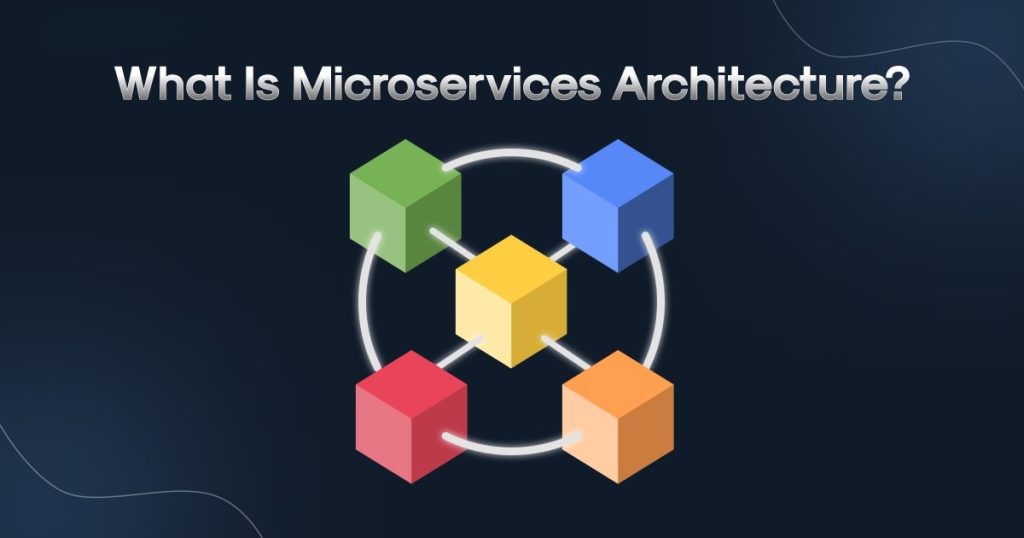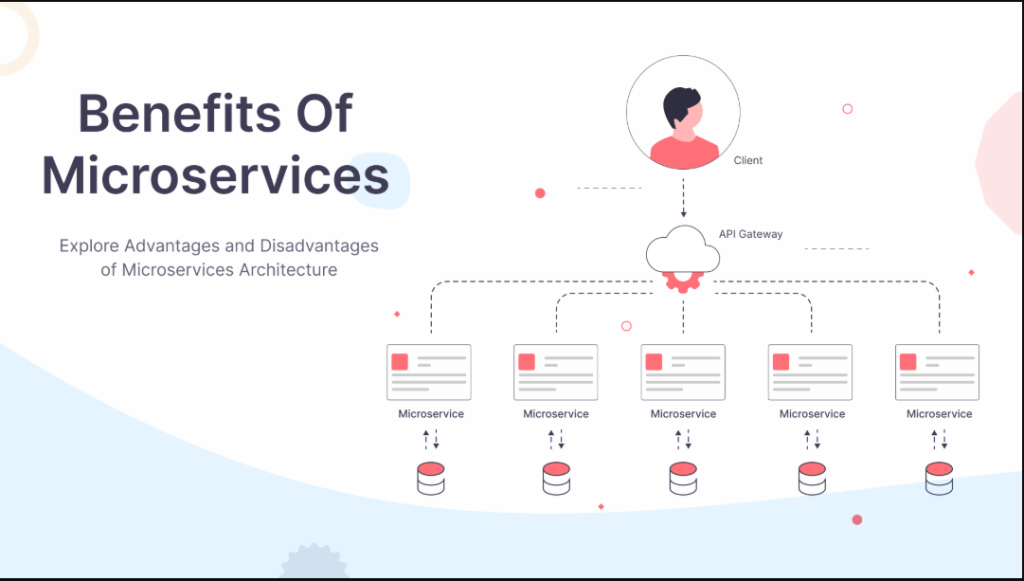Upgrade & Secure Your Future with DevOps, SRE, DevSecOps, MLOps!
We spend hours scrolling social media and waste money on things we forget, but won’t spend 30 minutes a day earning certifications that can change our lives.
Master in DevOps, SRE, DevSecOps & MLOps by DevOps School!
Learn from Guru Rajesh Kumar and double your salary in just one year.

Here’s a comprehensive post titled “What is Microservices Architecture? A Guide for DevOps Teams” with expanded content for each section:
Understanding Microservices Architecture
In recent years, microservices architecture has emerged as a popular approach for building scalable, flexible, and maintainable software applications. Unlike monolithic architecture, where an application is built as a single, unified unit, microservices break down an application into smaller, independent services that can operate, scale, and deploy separately. This modular approach allows development teams to focus on specific business functions, making it easier to innovate and maintain complex systems over time.
In this post, we will dive into the concept of microservices architecture, explore its key benefits, and examine how DevOps teams can leverage this approach to optimize their software development, deployment, and maintenance processes.
Key Features of Microservices Architecture
- Decomposed Services: Each microservice corresponds to a specific business function, making it easier to develop, test, and deploy.
- Independent Deployments: Microservices can be deployed independently, allowing for faster and more efficient software releases.
- Scalability: Microservices enable granular scaling of individual services, optimizing resource usage based on demand.
- Technology Agnostic: Each microservice can be developed using different technologies or programming languages, providing flexibility in choosing the best tools for the job.
- Resilience: Microservices are isolated, so failures in one service do not necessarily affect other parts of the system, improving overall system resilience.
1. The Core Concept of Microservices Architecture
At its core, microservices architecture revolves around breaking down a monolithic application into smaller, self-contained services. These services are loosely coupled, communicate over well-defined APIs, and can be developed, deployed, and scaled independently. Each microservice typically corresponds to a specific business domain, such as user authentication, payment processing, or order management.
Key Concepts in Microservices Architecture
- Modularization: By breaking down an application into independent services, microservices allow for more manageable, modular systems that can be developed and deployed separately.
- API Communication: Microservices communicate with each other using lightweight protocols like HTTP/REST, gRPC, or message queues (e.g., Kafka, RabbitMQ).
- Data Ownership: Each microservice owns its own database or data store, ensuring independence and reducing the risk of data contention across services.
- Service Discovery: Microservices typically use a service registry and discovery mechanism (e.g., Eureka, Consul) to keep track of available services and their locations.

2. The Benefits of Microservices for DevOps Teams
Microservices architecture offers several advantages, particularly for DevOps teams. By allowing teams to work on isolated services that can be deployed and scaled independently, microservices improve collaboration, efficiency, and agility in the development process. This model aligns well with DevOps practices, which emphasize continuous integration, continuous delivery, and automation.
Benefits of Microservices for DevOps Teams
- Faster Deployment: Microservices enable independent deployments, meaning developers can deploy new features or bug fixes without affecting the entire application. This leads to faster release cycles and reduced time to market.
- Improved Collaboration: Smaller, autonomous teams can take ownership of individual microservices, improving collaboration and reducing dependencies between teams.
- Scalability: Since microservices can be scaled independently, DevOps teams can allocate resources efficiently, scaling only the services that require more capacity based on demand.
- Faster Issue Resolution: Isolating services allows for faster debugging and resolution of issues. If a problem arises, it can often be fixed in a single microservice without affecting the broader system.
- Flexibility in Technology Stack: Each microservice can be built with the most appropriate technology or programming language for the task, allowing teams to use cutting-edge tools and frameworks for specific services.
3. Challenges of Implementing Microservices Architecture
While microservices offer numerous benefits, they also introduce certain challenges that DevOps teams must address. Transitioning from a monolithic application to a microservices-based architecture requires careful planning and execution to avoid pitfalls.
Common Challenges in Microservices Architecture
- Complexity in Management: Managing multiple independent services can be complex, requiring tools for monitoring, logging, and performance tracking across the entire system.
- Data Consistency: Ensuring data consistency across multiple microservices can be challenging, especially when each service has its own database. Strategies like eventual consistency and saga patterns are often used to address this.
- Inter-Service Communication: Microservices rely on network communication, which introduces potential issues like latency, timeouts, and network failures that DevOps teams must handle effectively.
- Testing and Debugging: Since microservices are distributed, testing and debugging can be more challenging than in a monolithic application. DevOps teams need to employ techniques such as mocking services, end-to-end testing, and distributed tracing to ensure the system works as expected.
- Deployment Complexity: While microservices allow for independent deployments, they also introduce challenges in orchestrating the deployment of numerous services. DevOps teams need to ensure that all services are deployed correctly and in the right order.
4. DevOps Practices for Successful Microservices Adoption
To make the most of microservices, DevOps teams need to adopt practices and tools that align with the principles of continuous integration, continuous delivery, and infrastructure automation. By automating workflows and ensuring consistent, reliable deployments, DevOps teams can maximize the benefits of microservices architecture.
Best DevOps Practices for Microservices
- Automated CI/CD Pipelines: Microservices should be deployed using automated pipelines that facilitate continuous integration and continuous delivery. Tools like Jenkins, GitLab CI, and CircleCI can automate the build, test, and deployment processes for each microservice.
- Infrastructure as Code (IaC): Use IaC tools like Terraform, Ansible, or CloudFormation to automate the provisioning and management of the underlying infrastructure needed to support microservices.
- Containerization: Docker and Kubernetes are essential for packaging and orchestrating microservices. Containers ensure consistency across environments and simplify deployment, while Kubernetes automates service discovery, load balancing, and scaling.
- Service Meshes: Use service meshes (e.g., Istio) to manage service-to-service communication, including routing, load balancing, and security. Service meshes also provide observability and monitoring, helping DevOps teams detect issues and improve system reliability.
- Monitoring and Observability: Implement robust monitoring tools like Prometheus, Grafana, and ELK stack to monitor the performance of each microservice and identify issues early. Additionally, using distributed tracing tools like Jaeger or Zipkin can help track requests as they move through multiple services.
5. Microservices and Serverless: A Perfect Combination
In 2025, we are seeing an increasing integration of serverless computing with microservices architectures. Serverless can simplify the management of individual microservices, as developers don’t need to manage the infrastructure or scaling of each service. This combination allows DevOps teams to focus more on building business logic while leaving the scalability and infrastructure concerns to the cloud provider.
Benefits of Combining Microservices and Serverless
- Cost Efficiency: Serverless computing reduces operational costs by only charging for the compute resources used, and combining it with microservices allows businesses to scale specific functions independently and cost-effectively.
- Faster Development Cycles: Developers can rapidly build and deploy microservices using serverless functions, speeding up the development process and reducing time to market.
- Reduced Operational Overhead: Serverless platforms handle much of the operational overhead, such as scaling and server management, while microservices provide the modularity and flexibility needed for large applications.
- Seamless Scalability: Serverless architecture automatically scales microservices based on demand, allowing businesses to handle variable workloads without manual intervention.
6. The Future of Microservices Architecture for DevOps Teams
As we move into 2025, the adoption of microservices architecture will continue to grow, with advancements in tools, practices, and integrations that make it even easier for DevOps teams to manage and deploy microservices. The evolution of container orchestration, serverless computing, and continuous delivery practices will enable businesses to build and maintain even more robust, scalable, and resilient microservices architectures.
Future Trends in Microservices for DevOps
- Enhanced Integration with AI and ML: As AI and ML technologies become more mainstream, microservices will increasingly be used to support intelligent applications. DevOps teams will integrate machine learning models and data processing pipelines into microservices architectures.
- More Robust Observability Tools: As microservices architectures grow, monitoring, logging, and tracing will become more essential. Advanced observability tools will enable DevOps teams to detect issues early and optimize performance across a distributed system.
- Faster Automation: The future of microservices will see even more automated workflows, from testing and deployment to monitoring and scaling, allowing DevOps teams to focus more on business value.
- Greater Security Integration: As security concerns increase, DevOps teams will implement more automated security practices into their microservices environments, including encryption, access control, and compliance checks.
Microservices as a Key to DevOps Success
Microservices architecture offers a scalable, flexible, and efficient way for DevOps teams to build, deploy, and manage complex applications. By breaking down applications into smaller, independent services, businesses can achieve faster development cycles, greater resilience, and more efficient resource management. While adopting microservices comes with its own set of challenges, DevOps teams equipped with the right tools, practices, and strategies can successfully implement and manage a microservices architecture.
As the landscape continues to evolve, microservices will remain a cornerstone of cloud-native development, enabling businesses to build innovative and scalable applications that drive success in the digital age.